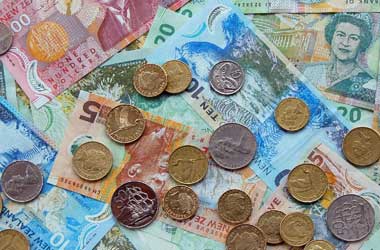 The slowdown in global economy continues to take a toll on oil rich economies in the Middle-East. According to IHS Markit, Saudi Arabia’s PMI declined to 47.70 in June, from 48.1 in the earlier month.
The slowdown in global economy continues to take a toll on oil rich economies in the Middle-East. According to IHS Markit, Saudi Arabia’s PMI declined to 47.70 in June, from 48.1 in the earlier month.
It was the fourth successive month of contraction in the non-oil private sector, against the backdrop of Covid-19 pandemic. The recent survey info was gathered between June 12 and 22, signaling quicker drop in employment, economic activities and fresh orders.
The rate of decrease in employment numbers expedited since May and was the quickest since the survey started in August 2009, while overall fresh work declined for the fourth consecutive month.
Exports fell again, primarily linked to supply chain issues against the background of global travel prohibitions. As far as price changes are concerned, both input and output expenses fell again.
Going forward, business anticipations slipped to bearish view for the first time since July 2012, even though the extent of bearish sentiment was only small, mainly because of increasing economic uncertainty and largely subdued demand.
On the contrary, the IHS Markit data for the UAE (United Arab Emirates) was surprisingly positive. The PMI surged to 50.4 in June, from 46.70 in May. A reading below 50 indicates contraction and vice-versa.
It was the first expansion in the non-oil private sector since December 2019 as the country resorted to easing measures implemented to halt the spread of Covid-19.
For the first time in six months, output recorded an expansion and fresh orders increased to the highest level since August 2019 against the background of enhanced demand both domestically and overseas.
In the meanwhile, job losses sped at the quickest pace in the series history, with backlogs increasing for the ninth successive month. Backlogs also recorded the highest level in three months.
Price data indicated that purchasing costs rose for the second consecutive month, partly due to greater demand for input, whereas selling fees decreased further in a series extending to October 2018. Going forward, the expectation for future activity bettered for the first time since March.
In a thin trading session Friday, the dollar index was transacted at 97.1. Both equity and bond markets in the US were shut down for Independence Day holiday.
The US dollar ended 0.2% last week against a bouquet of currencies as investor were anxious about the implications of second wave of Covid-19 in the US, in spite of a bullish ISM manufacturing PMI and jobs data published earlier last week.
Brent crude prices declined roughly 0.8% to approximately $42.80 per barrel Friday as a sharp rise in Covid-19 cases across the globe raised worries that fuel requirement will probably remain weak. As per Johns Hopkins, the number of fresh infections in the US reached another high. Investors will closely monitor gasoline demand in the week ended July 4.
Nevertheless, brent crude futures appreciated 4.2% at the end of last week, backed by positive economic info from the US and a huge decrease in crude inventories.
Fast spreading Covid-19 disease across the US, Brazil and India once again highlighted the worries about fuel demand. In the meantime, Baker Hughes data indicated that the amount of oil and gas rigs, which reflects future output, declined to a historical low of 263 last week.




